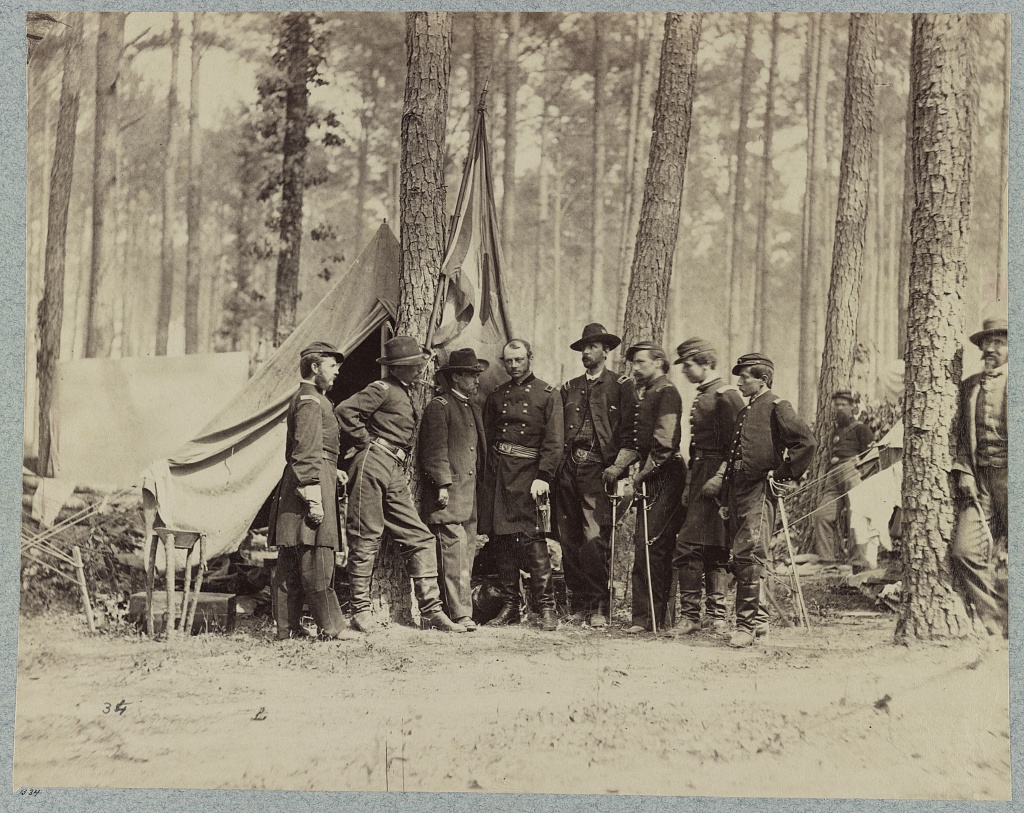In this seemingly ordinary Civil War photograph, Maj. Gen. Robert Brown Potter (center) of the Union Army stands among his staff — yet, if you look closely, you will notice a mysterious figure leaning against a tree on the right who appears somewhat out of place among the military men. This is none other than Mathew Brady, who might fairly be called the father of American war photography.
Although his exact birthday is unknown, Brady is estimated to have been born between 1822 and 1824. This year marks a starting point for recollecting the 200th anniversary of his birth.
Born to Irish immigrants in New York, Brady experienced a meteoric rise in fame thanks to his skill at producing daguerreotype photography, the first publicly accessible form of photography, which was then in high demand. Acclaimed for his remarkably crisp and striking style of photography, he created portraits of many notable people.
Brady’s skills had arguably the most significant impact when applied to war photojournalism. After the Civil War broke out in 1861, Brady became determined to capture the war in photos. Rallying his staff and other photographers, Brady doggedly followed the troops. Alongside the soldiers, Brady experienced the hardships of military life and was even forced to retreat with Union troops to Washington in the wake of the First Battle of Bull Run.
The most haunting wartime images associated with Brady were taken at Antietam. Brady’s associates Alexander Gardner and James F. Gibson photographed the carnage left behind from the battle, emphasizing the bodies of dead soldiers left twisted and scattered across the lonely battlefield. Brady shocked — and deeply moved — members of the public when he chose to show these images in an exhibit called “The Dead of Antietam” in his New York gallery in 1862.
Brady’s exhibition marked the first time that photographs of war dead on the battlefield were shown to the American public. This changed the way the public viewed the ongoing struggle and arguably altered their perceptions of war and its consequences.
“These pictures have a terrible distinctness,” wrote a New York Times correspondent on Oct. 20, 1862. “By the aid of the magnifying-glass, the very features of the slain may be distinguished.”
A pioneer of war photojournalism, Brady died in 1896 in New York and is buried in the Congressional Cemetery in Washington, D.C. The National Archives has digitized over 6,000 images taken by Brady and his staff during the Civil War, which continue to provide vivid glimpses into the history of war and conflict.
historynet magazines
Our 9 best-selling history titles feature in-depth storytelling and iconic imagery to engage and inform on the people, the wars, and the events that shaped America and the world.






